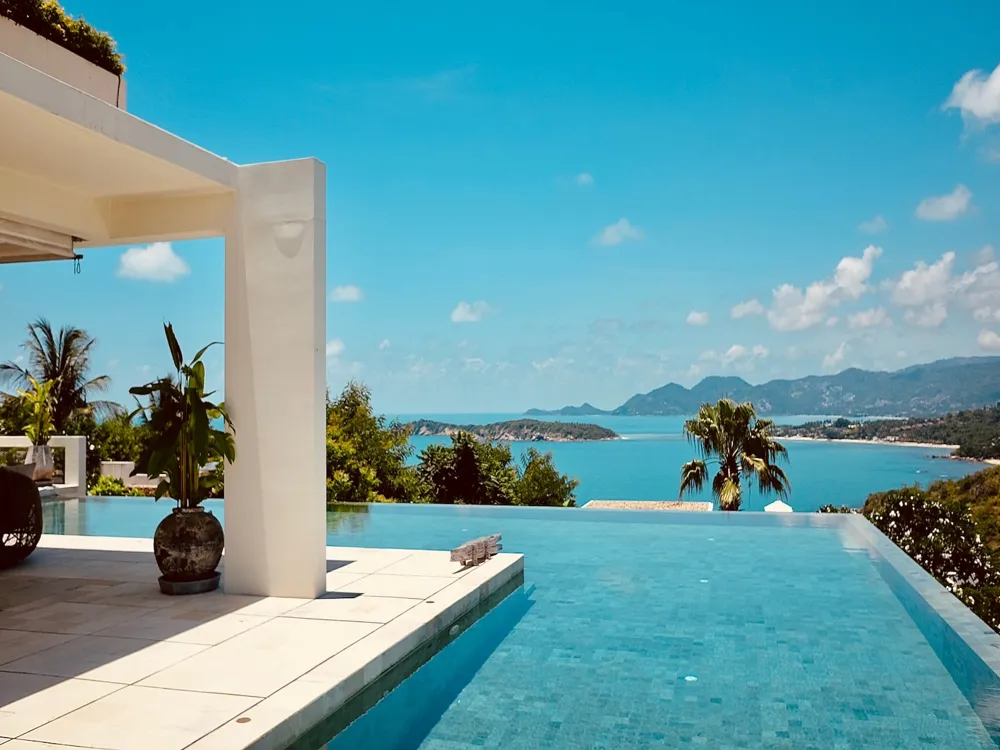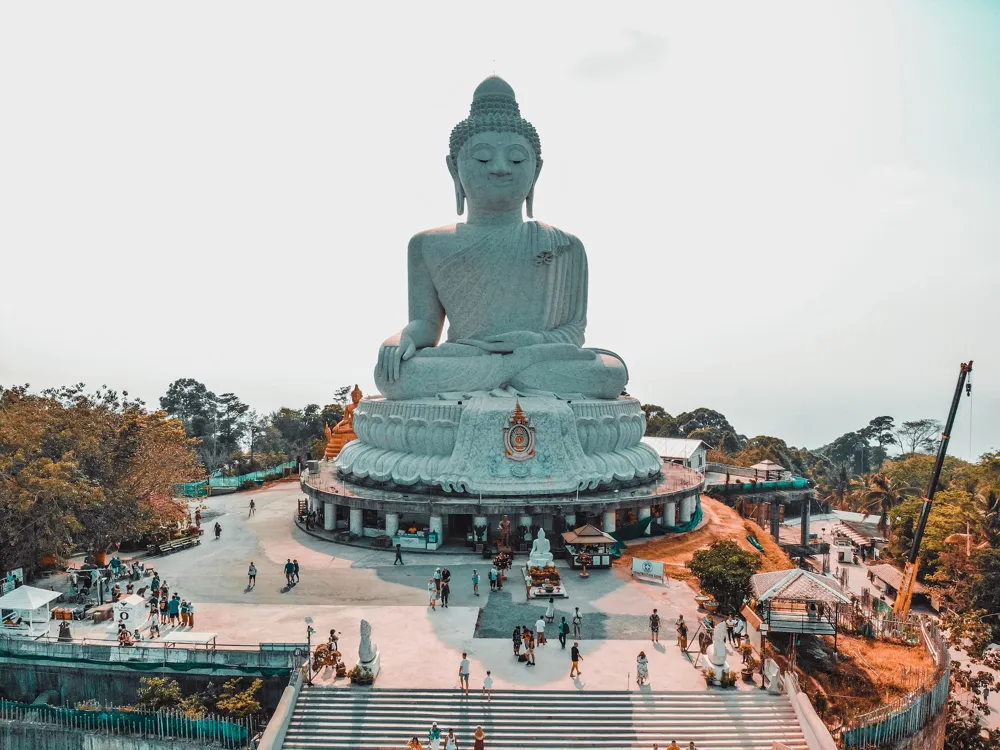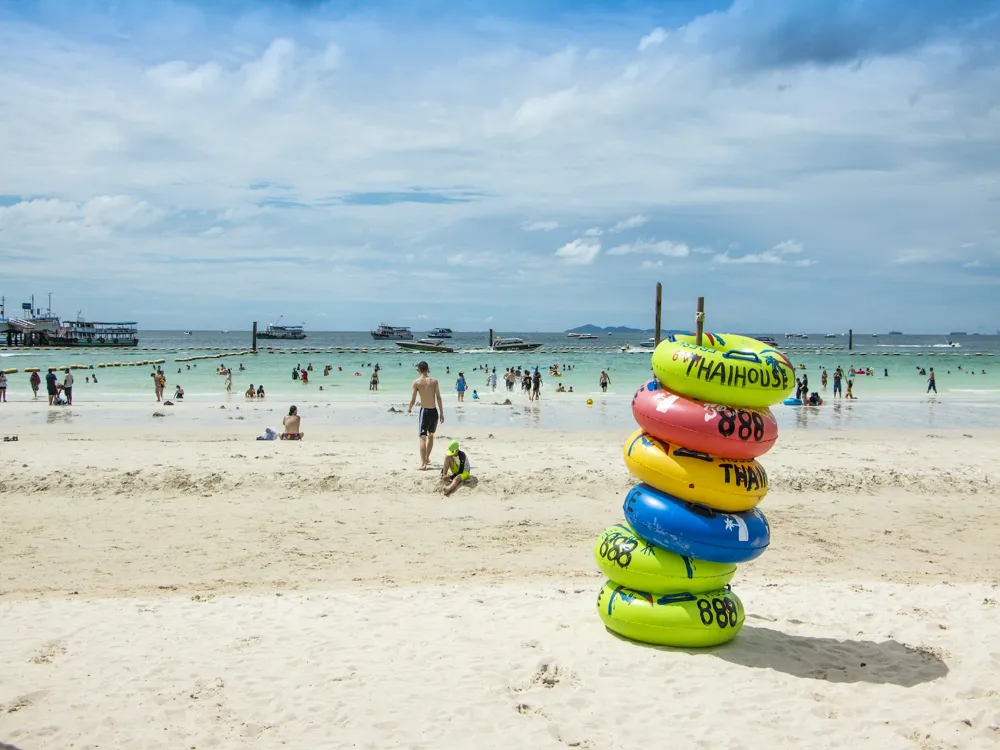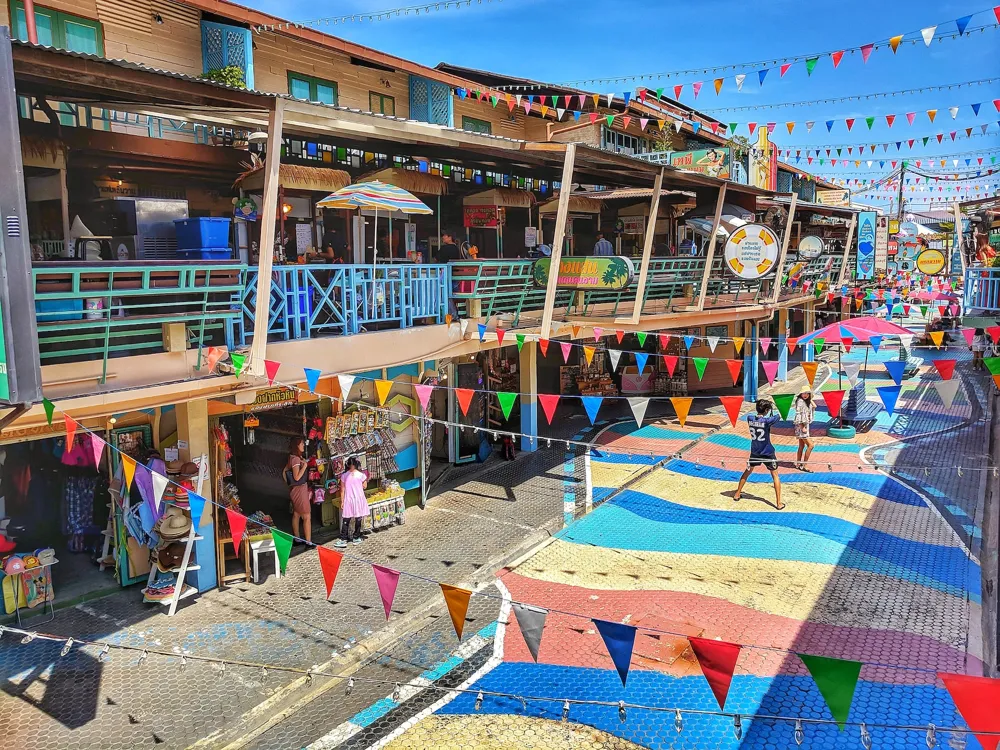Wat Koh Tao, nestled on the serene island of Koh Tao in Thailand, stands as a beacon of tranquility and spiritual enrichment. Known for its captivating natural surroundings and its significant role in the local community, Wat Koh Tao is not just a temple, but a symbol of the harmonious blend of culture and nature. The temple's setting on the idyllic island, renowned for its crystal-clear waters and vibrant marine life, adds to its allure, drawing visitors from around the world who seek a blend of spiritual and natural exploration. The history of Wat Koh Tao is deeply intertwined with the island's own story. Originally a simple place of worship for the local community, the temple has evolved over the years, mirroring the development of Koh Tao itself. From a remote fishing island to a hub for divers and travelers, Koh Tao's transformation has been reflected in the expanding role of Wat Koh Tao in the community. The temple now serves not only as a spiritual center but also as a cultural landmark, offering insight into the island's heritage and the Buddhist traditions of Thailand. As you approach Wat Koh Tao, you are greeted by its traditional Thai architecture, a visual treat that seamlessly blends with the lush greenery of the island. The intricate designs and ornate details of the temple are a testament to the skilled craftsmanship and religious devotion of the Thai people. The temple grounds are an oasis of calm, inviting visitors to step away from the bustle of daily life and engage in quiet reflection or meditation. Wat Koh Tao is more than just a tourist attraction; it is a living, breathing part of the Koh Tao community. Regular ceremonies and festivals are held here, drawing locals and visitors alike into a vibrant tapestry of cultural expression. The temple serves as a reminder of the importance of spiritual well-being and community in our increasingly fast-paced world. The architecture of Wat Koh Tao is a splendid showcase of traditional Thai design, infused with unique elements that reflect the island's maritime heritage. The temple's structure is a harmonious blend of symmetry, balance, and intricate detail, creating a visually stunning spectacle that captivates visitors. The main hall, or Ubosot, is the centerpiece of the temple, adorned with intricate carvings, gold leaf, and vibrant murals that depict scenes from the life of Buddha and local folklore. The roofs of Wat Koh Tao are particularly striking, characterized by their steeply pitched design and layered tiers. These roofs are often embellished with chofahs, ornamental elements resembling bird feathers, which are believed to ward off evil spirits. The use of bright colors and gilded accents on the roof and throughout the temple adds to the sense of sacredness and awe. One of the most distinctive features of the temple's architecture is its integration of natural elements. The temple is designed to coexist harmoniously with its surroundings, with open spaces and windows that frame the stunning views of the island and allow natural light to flood the interiors. This design philosophy not only enhances the aesthetic appeal of the temple but also symbolizes the Buddhist principle of living in harmony with nature. Inside the temple, the attention to detail is equally impressive. The walls and ceilings are adorned with hand-painted murals that tell stories from Buddhist scriptures and Thai mythology. These artworks are not only visually stunning but also serve an educational purpose, conveying moral lessons and religious teachings to the temple's visitors. The architecture of Wat Koh Tao is a testament to the skill and artistry of Thai craftsmen and the enduring appeal of traditional Thai design. It stands as a bridge between the past and present, offering a glimpse into the rich cultural heritage of Thailand while providing a space for contemporary worship and contemplation. When visiting Wat Koh Tao, it's important to dress modestly as a sign of respect. This means covering your shoulders and wearing pants or skirts that go below the knee. Avoid wearing revealing clothing or beachwear, even though the temple is on an island. As a place of worship, it's crucial to be respectful of the temple's cultural and religious significance. Speak softly, avoid inappropriate behavior, and be considerate of those who are there for religious reasons. Taking off your shoes before entering certain areas of the temple is also a sign of respect. Photography is generally allowed in Wat Koh Tao, but always look for signs indicating restrictions. Be respectful when taking photos, especially during ceremonies or while people are praying. Avoid using flash photography inside the temple, as it can be disruptive. Engaging in temple activities, such as meditation sessions or ceremonies, can be a deeply enriching experience. However, participate only if you feel comfortable, and always follow the lead of the locals or temple guides. Check the temple's opening hours and any special events or ceremonies that might be happening during your visit. This will help you avoid large crowds and ensure a more tranquil experience. Also, consider visiting early in the morning or later in the afternoon to avoid the heat. Reaching Wat Koh Tao involves a journey to the island of Koh Tao itself, which is part of the charm of visiting this sacred place. The most common way to get to Koh Tao is by ferry or speedboat from the mainland or neighboring islands like Koh Samui or Koh Phangan. Once on the island, Wat Koh Tao can be easily accessed by local transportation such as taxis, motorbike rentals, or even by walking, depending on where you're staying. The journey to Wat Koh Tao is not just a trip; it's an integral part of the experience, offering stunning coastal views and a sense of adventure. Read MoreOverview of Wat Koh Tao
Architecture of Wat Koh Tao
Tips When Visiting Wat Koh Tao
Dress Appropriately
Be Mindful of Cultural Norms
Photography Etiquette
Participate in Temple Activities
Plan Your Visit
How To Reach Wat Koh Tao
Koh Tao Tourism
Best Time to Visit Koh Tao
How to Reach Koh Tao
Things To Do Koh Tao
Wat Koh Tao
Koh Tao
NaN onwards
View koh-tao Packages
Also Refered As:
Temple Koh Tao
Koh-tao Travel Packages
View All Packages For Koh-tao
Top Hotel Collections for Koh-tao

Private Pool

Luxury Hotels

5-Star Hotels

Pet Friendly
Top Hotels Near Koh-tao
Other Top Ranking Places In Koh-tao
View All Places To Visit In koh-tao
View koh-tao Packages
Also Refered As:
Temple Koh Tao
Koh-tao Travel Packages
View All Packages For Koh-tao
Top Hotel Collections for Koh-tao

Private Pool

Luxury Hotels

5-Star Hotels

Pet Friendly






















